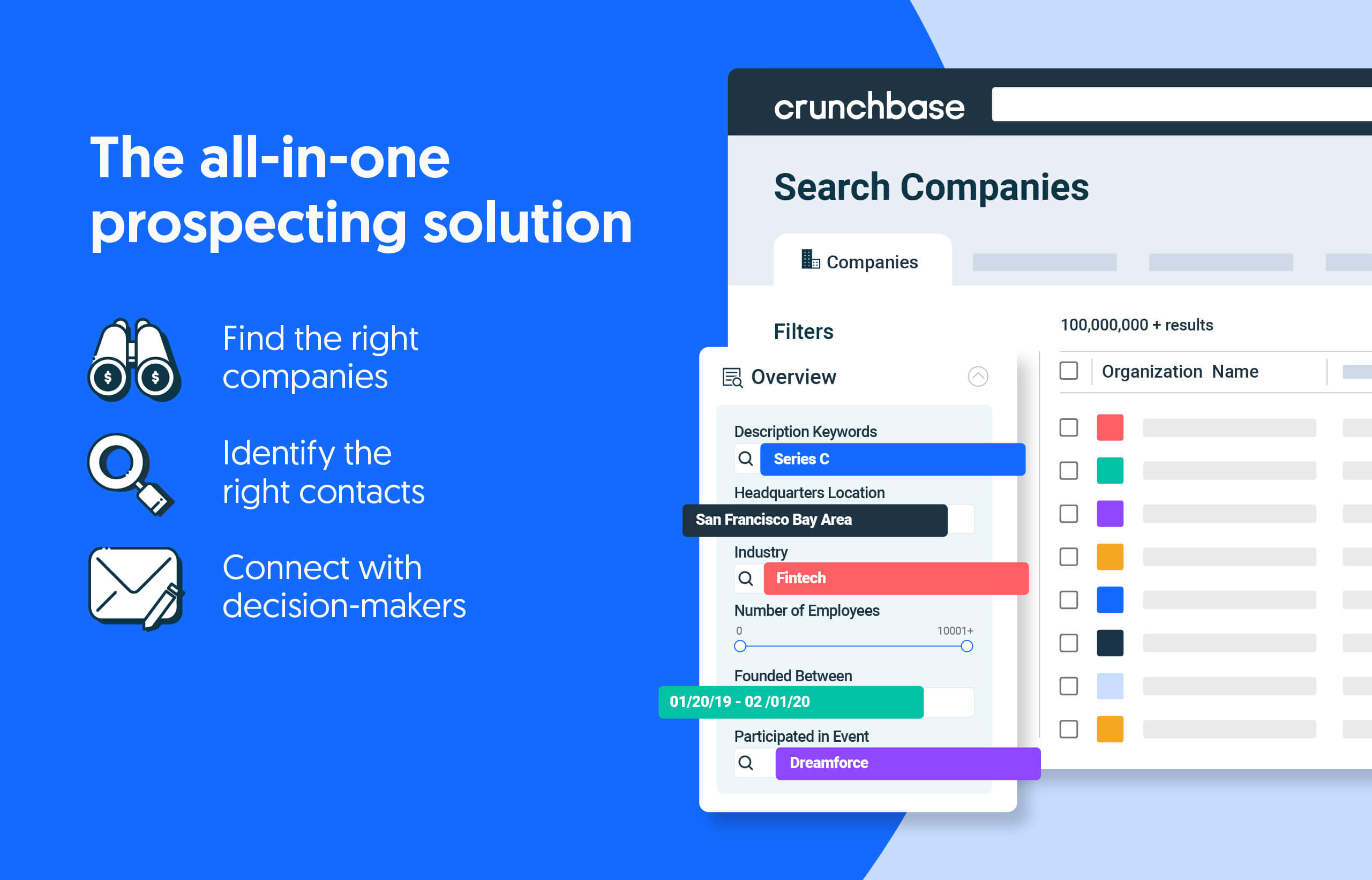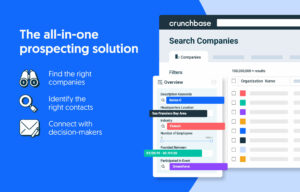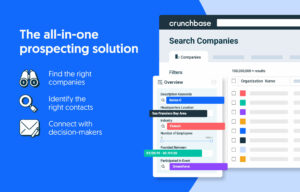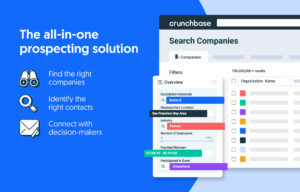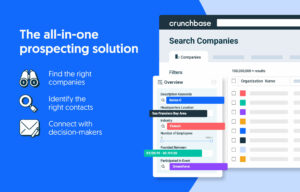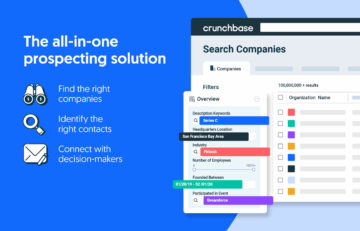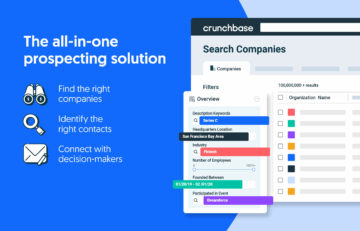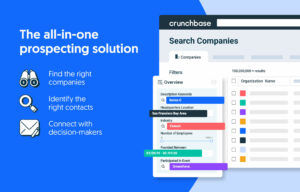By the time a startup gets to Series D stage, backers are done asking questions about product-market fit and what inspires founders.
At this point, it’s all about scale. And while an IPO or acquisition might still be a few years away, executives better be able to present compelling options for big returns.
The lack of large exits lately, combined with falling tech valuations and slower startup investment, has made the case for funding a Series D round much harder in recent months. These factors have contributed to pushing U.S. investment at this stage to its lowest point in years.
Search less. Close more.
Grow your revenue with all-in-one prospecting solutions powered by the leader in private-company data.
How low? Using Crunchbase data, we charted out total Series D investment for the past eight quarters below. As you can see, deal-making is down sharply from its former peak.
Yes, but that’s a very high peak
Of course, things did reach stratospheric levels in the gravity-defying investment environment of 2021 and early 2022. At the peak in the fourth quarter of 2021, for instance, there were three D rounds of $1 billion or more alone. The median round at that stage was over $100 million.
Those are anomalous comps. So we can’t be too shocked to see we’ve come down since.
Nonetheless, the declines are dramatic. For the first quarter of this year, total Series D investment is down 92% from the peak and 86% from the year-ago period.
The shuttering of the IPO window looks like the most likely culprit in curtailing really big deals. Investors usually back a deal in the hundreds of millions or more only if they see a clear-cut path to exit that will return a tidy multiple.
So far this year, we’ve seen just one Series D in the hundreds of millions — a $300 million financing for Wiz, a cloud security company headquartered in New York with significant operations in Israel.
Including Wiz, there have been just six Series D rounds this year of $100 million or more, which we list below:
Most active VCs of recent years aren’t leading Series Ds
Venture firms that used to do a lot of Series D aren’t cutting checks.
Per Crunchbase data, the investors who used to be most active in backing large, later-stage rounds have stopped leading Series D rounds.
Standouts in this category include Tiger Global Management and SoftBank Vision Fund. In 2021 and 2022, the two firms were Series D lead investors 43 times, per Crunchbase data. So far this year, neither has led a single round at this stage.
Andreessen Horowitz and Insight Partners — two other firms that regularly top the most active investor lists — haven’t led a U.S. Series D round for more than a year. In 2021 and 2022, the two were lead backers in D rounds 22 times.
Series D is also way down from nonpeak years
One can’t dismiss the plunge in Series D investment as merely a decline from a very high peak. So far, 2023 is on track to turn in the lowest total investment at this stage in years.
For perspective, we chart out Series D from 2018 till this year below:
It boils down to one simple takeaway: If you are a Series C company that needs to raise fresh funding, the timing looks pretty bad.
Related Crunchbase Pro queries:
Illustration: Dom Guzman

Stay up to date with recent funding rounds, acquisitions, and more with the Crunchbase Daily.
Global venture funding in April reached $21 billion, the second-lowest amount recorded in a single month since July 2022.
The appetite for intranet platforms has remained resilient during the pandemic, with over $2.4 billion raised in the space in 2022.
Mavenir expects to use the new capital for — what else? — adding AI tools.
Five companies joined The Crunchbase Unicorn Board in April 2023 — the sixth month in a row for single digits. Three are in the AI sector.
- SEO Powered Content & PR Distribution. Get Amplified Today.
- PlatoAiStream. Web3 Data Intelligence. Knowledge Amplified. Access Here.
- Minting the Future w Adryenn Ashley. Access Here.
- Source: https://news.crunchbase.com/venture/series-d-startup-funding-down/
- :has
- :is
- $1 billion
- $100 million
- $UP
- 2018
- 2021
- 2022
- 2023
- 22
- a
- Able
- About
- acquisition
- acquisitions
- active
- adding
- AI
- All
- all-in-one
- alone
- also
- amount
- an
- and
- appetite
- April
- ARE
- AS
- At
- away
- back
- backers
- backing
- Bad
- BE
- been
- below
- Better
- Big
- Billion
- board
- but
- by
- CAN
- capital
- case
- Category
- Chart
- Checks
- Close
- Cloud
- Cloud Security
- combined
- come
- Companies
- company
- compelling
- contributed
- course
- cover
- CrunchBase
- cutting
- daily
- data
- Date
- deal
- Deals
- Decline
- Declines
- DID
- digits
- Dismiss
- do
- does
- done
- down
- dramatic
- during
- Early
- end
- Environment
- executives
- Exit
- exits
- expects
- factors
- Falling
- far
- few
- financing
- firms
- First
- fit
- For
- Former
- founders
- Fourth
- fresh
- from
- funding
- funding rounds
- Global
- Have
- headquartered
- High
- Hits
- HTTPS
- Hundreds
- hundreds of millions
- if
- in
- include
- instance
- investment
- investor
- Investors
- IPO
- Israel
- ITS
- joined
- jpg
- July
- just
- just one
- Lack
- large
- lead
- leader
- leading
- Led
- less
- levels
- like
- likely
- List
- Lists
- LOOKS
- Lot
- Low
- lowest
- made
- mean
- merely
- might
- million
- millions
- Month
- months
- more
- most
- much
- multiple
- needs
- Neither
- New
- New York
- of
- on
- ONE
- only
- Operations
- Options
- or
- Other
- out
- over
- pandemic
- past
- path
- Peak
- period
- perspective
- Platforms
- plato
- Plato Data Intelligence
- PlatoData
- plunge
- Point
- powered
- present
- pretty
- Pro
- Pushing
- Quarter
- queries
- Questions
- raise
- raised
- reach
- reached
- really
- recent
- Recent Funding
- recorded
- regularly
- remained
- resilient
- return
- returns
- revenue
- round
- rounds
- ROW
- s
- Scale
- sector
- security
- see
- seen
- Series
- Series C
- shocked
- significant
- Simple
- since
- single
- SIX
- sixth
- So
- so Far
- Solutions
- Space
- Stage
- startup
- stay
- Still
- stopped
- tech
- than
- that
- The
- There.
- These
- they
- things
- this
- this year
- three
- till
- time
- times
- timing
- to
- too
- tools
- top
- Total
- track
- TURN
- two
- u.s.
- unicorn
- use
- used
- using
- usually
- Valuations
- VCs
- venture
- venture-funding
- very
- vision
- was
- Way..
- we
- were
- What
- which
- while
- WHO
- will
- with
- year
- years
- york
- you
- Your
- zephyrnet

